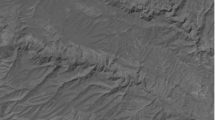Abstract
We have developed a general purpose registration algorithm for medical images and volumes. The transformation between images is modelled as locally affine but globally smooth, and explicitly accounts for local and global variations in image intensities. An explicit model of missing data is also incorporated, allowing us to simultaneously segment and register images with partial or missing data. The algorithm is built upon a differential multiscale framework and incorporates the expectation maximization algorithm. We show that this approach is highly effective in registering a range of synthetic and clinical medical images.
This work was supported by an Alfred P. Sloan Fellowship, a NSF CAREER Award (IIS-99-83806), and a department NSF infrastructure grant (EIA-98-02068). The authors can be reached at sp@cs.dartmouth.edu and farid@cs.dartmouth.edu.
Access this chapter
Tax calculation will be finalised at checkout
Purchases are for personal use only
Preview
Unable to display preview. Download preview PDF.
Similar content being viewed by others
References
Anandan, P.: A computational framework and an algorithm for the measurement of visual motion. International Journal of Computer Vision 2(3), 283–310 (1989)
Bansal, R., Staib, L., Chen, Z., Rangarajan, A., Knisely, J., Nath, R., Duncan, J.S.: A novel approach for the registration of 2D portal and 3D CT images for treatment setup verification in radiotherapy. In: Wells, W.M., Colchester, A.C.F., Delp, S.L. (eds.) MICCAI 1998. LNCS, vol. 1496, pp. 1075–1086. Springer, Heidelberg (1998)
Barron, J.L., Fleet, D.J., Beauchemin, S.S.: Performance of optical flow techniques. International Journal of Computer Vision 12(1), 43–77 (1994)
Dempster, A.P., Laird, N.M., Rubin, D.B.: Maximum lilelihood from incomplete data via the em algorithm. Journal of the Royal Statistical Society 99(1), 1–38 (1977)
Farid, H., Simoncelli, E.P.: Optimally rotation-equivariant directional derivative kernels. In: International Conference on Computer Analysis of Images and Patterns, Berlin, Germany, pp. 207–214 (1997)
Horn, B.K.P.: Robot Vision. MIT Press, Cambridge (1986)
Lester, H., Arridge, S.R.: A survey of hierarchical non-linear medical image registration. Pattern Recognition 32(1), 129–149 (1999)
Lucas, B.D., Kanade, T.: An iterative image registration technique with an application to stereo vision. In: International Joint Conference on Artificial Intelligence, Vancouver, pp. 674–679 (1981)
Maintz, J.B.A., Viergever, M.A.: A survey of medical image registration. Medical Image Analysis 2(1), 1–36 (1998)
Periaswamy, S., Farid, H.: Elastic registration in the presence of intensity variations. IEEE Transactions on Medical Imaging (2003) (in press)
Shi, J., Tomasi, C.: Good features to track. In: Computer Vision and Pattern Recognition, Seatle, WA, USA, pp. 593–600 (1994)
Negahdaripour, S., Yu, C.-H.: A generalized brightness change model for computing optical flow. In: International Conference of Computer Vision, Berlin, Germany, pp. 2–11 (1993)
Author information
Authors and Affiliations
Editor information
Editors and Affiliations
Rights and permissions
Copyright information
© 2003 Springer-Verlag Berlin Heidelberg
About this paper
Cite this paper
Periaswamy, S., Farid, H. (2003). Elastic Registration with Partial Data. In: Gee, J.C., Maintz, J.B.A., Vannier, M.W. (eds) Biomedical Image Registration. WBIR 2003. Lecture Notes in Computer Science, vol 2717. Springer, Berlin, Heidelberg. https://doi.org/10.1007/978-3-540-39701-4_11
Download citation
DOI: https://doi.org/10.1007/978-3-540-39701-4_11
Publisher Name: Springer, Berlin, Heidelberg
Print ISBN: 978-3-540-20343-8
Online ISBN: 978-3-540-39701-4
eBook Packages: Springer Book Archive




